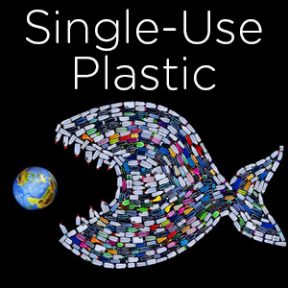 I remember when my grandmother used to let her beans “go to seed” and dried them in a cool, dry place until the following season. She had the best vegetables. Her green beans were sweet and crisp. Her tomatoes were flavorful.
I remember when my grandmother used to let her beans “go to seed” and dried them in a cool, dry place until the following season. She had the best vegetables. Her green beans were sweet and crisp. Her tomatoes were flavorful.
Over the past 20 years, I’ve found that the veggies we buy at Safeway and large grocery stores look beautiful but taste bland. Monsanto has created genetically engineered fruits and vegetables that are bigger, last longer than their organic counterparts, and made rubbery to resist mold. They have genetically engineering these plants to produce seeds that won’t grow – Yup! – to ensure that they can control all seed sales.
When I first heard this, it reminded me of “FernGully” – you know the animated children’s movie with Robin Williams about big business clear cutting all of the rainforests. But, there is hope. The Global Seed Network has organized a program uniting seed savers to create an independent and diverse seed supply.
Check out the Global Seed Network to see how you can share your seeds and get seeds that are favorable to your locale.
We can beat Monsanto! Save your seeds! Share your seeds!
 I remember when my grandmother used to let her beans “go to seed” and dried them in a cool, dry place until the following season. She had the best vegetables. Her green beans were sweet and crisp. Her tomatoes were flavorful.
I remember when my grandmother used to let her beans “go to seed” and dried them in a cool, dry place until the following season. She had the best vegetables. Her green beans were sweet and crisp. Her tomatoes were flavorful.
Over the past 20 years, I’ve found that the veggies we buy at Safeway and large grocery stores look beautiful but taste bland. Monsanto has created genetically engineered fruits and vegetables that are bigger, last longer than their organic counterparts, and made rubbery to resist mold. They have genetically engineering these plants to produce seeds that won’t grow – Yup! – to ensure that they can control all seed sales.
When I first heard this, it reminded me of “FernGully” – you know the animated children’s movie with Robin Williams about big business clear cutting all of the rainforests. But, there is hope. The Global Seed Network has organized a program uniting seed savers to create an independent and diverse seed supply.
Check out the Global Seed Network to see how you can share your seeds and get seeds that are favorable to your locale.
We can beat Monsanto! Save your seeds! Share your seeds!
 Considering getting an MBA? Think again. Many full-time MBA programs are changing the direction of their programs, and MBA grads are giving these programs low rankings. Although the international MBA programs are continuing at major universities, domestic programs are scaling back their executive MBA and MBA markets because of these 3 reasons: (1) employers are reluctant to pay higher salaries; (2) many MBA programs offer online courses; and (3) grad students are losing interest in the MBA programs. Wake Forest, Virginia Tech, and Simmons College have closed their MBA programs and that seems to be a new trend, but full-time MBA programs at the most elite colleges will continue.
Considering getting an MBA? Think again. Many full-time MBA programs are changing the direction of their programs, and MBA grads are giving these programs low rankings. Although the international MBA programs are continuing at major universities, domestic programs are scaling back their executive MBA and MBA markets because of these 3 reasons: (1) employers are reluctant to pay higher salaries; (2) many MBA programs offer online courses; and (3) grad students are losing interest in the MBA programs. Wake Forest, Virginia Tech, and Simmons College have closed their MBA programs and that seems to be a new trend, but full-time MBA programs at the most elite colleges will continue.
Seems that grad students are preferring the master’s programs that can be completed in just 9 months and at about half the cost of an MBA. These programs are more specialized so students can focus on finance, accounting, international business, management, marketing, economics, or business analytics.
Hmm. Sounds like you might consider avoiding more student debt in lieu of gaining specific business skills for half the cost. Or, apply your knowledge and skills set where you’re currently working and reap the financial rewards and bonuses.
 While May 1st WAS the deadline for most private and selective public colleges, there are plenty of colleges still recruiting students for Fall 2018. Only 36% of the thousands of colleges in the US have filled their incoming classes by May 1st. Yup. So BREATHE.
While May 1st WAS the deadline for most private and selective public colleges, there are plenty of colleges still recruiting students for Fall 2018. Only 36% of the thousands of colleges in the US have filled their incoming classes by May 1st. Yup. So BREATHE.
There are over 400 colleges that still have spaces for fall undergraduate enrollment according to the National Association for College Admission Counseling. Check out which colleges have openings using this easy-to-use list:
https://www.nacacnet.org/collegeopenings
And, if you don’t like any of these 400 colleges, you can always go to a community college and transfer into your #1 college junior year. You do have options!
 I get annoyed when people respond to smartphone texts and calls while I’m talking to them. Call me old school, but it sends me the message that whatever or whomever is tugging at that person is far more important than me. It could even be a wrong number – and our conversation was awkwardly disrupted. But when parents pay for their children to work with me and their children still check their phones (even when it’s on vibrate!) during our meetings, I find that downright disrespectful!
I get annoyed when people respond to smartphone texts and calls while I’m talking to them. Call me old school, but it sends me the message that whatever or whomever is tugging at that person is far more important than me. It could even be a wrong number – and our conversation was awkwardly disrupted. But when parents pay for their children to work with me and their children still check their phones (even when it’s on vibrate!) during our meetings, I find that downright disrespectful!
If these students are doing this during my meetings, imagine how many times they check their phones in class? While doing homework? Or driving? I just read an article about the Yondr pouch that eliminates smartphone use that concert venues, courtrooms, and doctor’s offices are using to prevent people from recording activities. Wouldn’t it be great for teachers to have all students put their phones in these fabric pouches during class to keep the students focused on lectures and discussions?
Take this a step further and imagine how students could finish homework, study for tests, read with better comprehension and generally improve their learning – and grades – if parents had these pouches at home.
[Source]
 When high school students at public schools in wealthy areas have access to better classes and better college advising than others, we are increasing our divide between the haves and the have nots. Some public school students have engineering, robotics, speech and debate, over 20 AP courses, and excellent introduction to high-paying careers in STEM, while students from inner city ghettos don’t have basics like AP classes, honors courses, and the breadth of courses that selective colleges require for eligibility to attend.
When high school students at public schools in wealthy areas have access to better classes and better college advising than others, we are increasing our divide between the haves and the have nots. Some public school students have engineering, robotics, speech and debate, over 20 AP courses, and excellent introduction to high-paying careers in STEM, while students from inner city ghettos don’t have basics like AP classes, honors courses, and the breadth of courses that selective colleges require for eligibility to attend.
The average high school counselor works with about 450 students, while counselors in poorer districts can have upwards of 1,000 students. These students from low-income families rely on their school guidance counselors to choose the necessary courses to meet minimum requirements for college but when their counselors are struggling to handle the sheer volume of students, they don’t have time to offer the support the college-bound students need to look at majors/careers, GPA and SAT/ACT averages, and financial aid.
It seems unfair that students who attend public schools in wealthy areas have smaller counselor/student ratios and better courses offerings than students who attend schools in poverty-stricken areas. Wouldn’t we want those underserved students to get more help? After all, wealthy students work with private college advisors and most only meet with their guidance counselors for class schedules. Hmm.
 In August, Merit Academy hosted TEDxMeritAcademy at the Rio Theatre in Santa Cruz.
In August, Merit Academy hosted TEDxMeritAcademy at the Rio Theatre in Santa Cruz.
Tim Niemier was a featured speaker, and his TEDx Talk is embedded below.
“How do we stop the flow of plastic pollution into our oceans?”
We need healthy oceans, but we can’t give up our plastic. Maybe there’s a way that we can have healthy oceans and still use plastic. If we create value for recycled plastic as a new resource, we can prevent it from harming our life-sustaining oceans. Tim will discuss a clever way of combining great worldwide designs with an inexpensive local recycling process that can stop the flow of plastics into our oceans.
About Tim Niemier: Tim’s goal in life is to put “A billion butts in boats in healthy water.” He is the founder and designer/entrepreneur who introduced the sit-on- top Ocean Kayak to the world. These kayaks revolutionized all paddle sports because it made kayaking water-friendly. Bringing millions of people into the water makes them appreciate the delicate balance of our eco systems. Tim was 100% responsible for all post-consumer waste and pioneered product stewardship in the water-sport industry and other endeavors. He also continues to lead many environmental organizations with creative and sustainable innovations. Tim enjoys finding solutions to cleaning the ocean using resource management and recycling.
 Being married to a “tree hugger” for over 30 years, you would think I’d know what is recyclable and what isn’t. Right? When in doubt, I’d just toss it in the recycle container so I wouldn’t feel guilty throwing into the trash… A new report by Global Citizen states that there’s been an 84% increase in what is REJECTED for recycling!
Being married to a “tree hugger” for over 30 years, you would think I’d know what is recyclable and what isn’t. Right? When in doubt, I’d just toss it in the recycle container so I wouldn’t feel guilty throwing into the trash… A new report by Global Citizen states that there’s been an 84% increase in what is REJECTED for recycling!
Here’s what can be recycled:
– Recyclable containers that are NOT contaminated by food (wash out plastic bottles and tin cans)
– Cardboard containers (pizza boxes) need to be free of oil and food
– Plastic bottle tops (remove caps from the bottle)
– Recyclable coffee cups
– Cups WITHOUT a thin layer of polyethylene (use metal or ceramic reusable cups instead)
Here’s what CAN’T be recycled:
– Kleenex tissues
– Containers contaminated by food waste
– Toothpaste tubes
– Plastic toys
– Wrapping paper
– Mylar food bags (chips)
– Anything that is put in plastic bags to recycle
– Batteries (take to Household Waste Collection centers)
– Any food waste: eggshells, peels, compost
– Old clothes
Use reusable items when possible. When you do need to recycle, do it properly. Just be sure that no items that have been contaminated by food end up in your recycle bin! Happy Earth Day!
 It’s time to stop using single-use plastic. You’ve seen the photos showing tons of plastic washing up on the shores worldwide. You’ve seen the harm plastics do to fish and mammals that get tangled in or ingest plastics. Here are 5 easy things you can do to substantially reduce your single-use plastic usage:
It’s time to stop using single-use plastic. You’ve seen the photos showing tons of plastic washing up on the shores worldwide. You’ve seen the harm plastics do to fish and mammals that get tangled in or ingest plastics. Here are 5 easy things you can do to substantially reduce your single-use plastic usage:
1) Stop buying drinks in plastic bottles – buy in bulk and use refillable glass or metal containers
2) Stop using plastic wrap – use Tupperware or reusable storage containers
3) Stop using straws – use reusable straws or forgo straws altogether
4) Stop using Styrofoam – tell restaurants that you prefer compostable containers
5) Stop buying food in plastic packaging – buy food in bulk and use your reusable glass or metal containers.
This is actually easy to do and will save you lots of money too. Stock your car with reusable bottles and containers so you’ll have them when you need them. I use glass containers for my left-over food at restaurants. I appreciate being able to microwave these treats in glass so the plastic doesn’t leech into my food. After I wash the containers, I put them by the door so I remember to put them in the trunk of my car. Just thought I’d post this as we approach Earth Day.
[Source]
 If you’ve been offered a place on a college waiting list, don’t hold your breath! This year, colleges have offered more students on their waiting list than their entire freshman class size. Brown University admitted 2,566 students to fill 1,719 spaces for their freshman class this fall. Considering this is an elite Ivy League college, they should easily receive deposits for all of these spaces. Right? Well then why did they offer an additional 2,724 students a place on their waiting list?
If you’ve been offered a place on a college waiting list, don’t hold your breath! This year, colleges have offered more students on their waiting list than their entire freshman class size. Brown University admitted 2,566 students to fill 1,719 spaces for their freshman class this fall. Considering this is an elite Ivy League college, they should easily receive deposits for all of these spaces. Right? Well then why did they offer an additional 2,724 students a place on their waiting list?
Brown isn’t alone. Just about every college offers waiting list. Not only do colleges want to unsure that they have a full class of freshmen but these waiting lists give colleges the stats to keep their admit rates low. Many families rank their colleges choices by admit rates – the more difficult it is to get in, the more desirable it becomes. Simple supply and demand.
Some of these colleges have waiting lists with over 3,000 students but they admit only 20. Odds don’t look good. But colleges do want to know if you would attend if admitted, so letting them know that you would accept their offer off the waiting list could improve your chances of getting in. Good luck, and check out the source link below for a fantastic table of colleges with waiting lists, how many students are on them, what percentage are admitted, etc.:
[Source]
 In August, Merit Academy hosted TEDxMeritAcademy at the Rio Theatre in Santa Cruz.
In August, Merit Academy hosted TEDxMeritAcademy at the Rio Theatre in Santa Cruz.
Gregory Gavin was a featured speaker, and his TEDx Talk is embedded below.
“What if you built a river in a classroom?”
Artist Gregory Gavin set out to use the engaging properties of water to invigorate public life and ended up creating a new kind of classroom. Only in a world with consequences, he argues, can children truly be engaged, take on responsibility and become creative agents.
About Gregory: Gregory Gavin is an artist, inventor and educator. He founded Riveropolis in 2004 to design, build, install and facilitate innovative water play environments and to bring design experiences to schools, museums and neighborhoods. Since 1991, his projects — ranging from woodworking to filmmaking, to interactive waterworks — have engaged a diversity of participants to both create and exhibit work in public places. His work has been particularly successful in overcoming the obsessive segregation of children, teen and adult activities into separate realms in a way that he feels damages the transfer of inter-generational knowledge and discovery. Gavin has been commissioned by National Endowment for the Arts, the de Young Museum, Yerba Buena Center for the Arts, the Seattle Public Art Program and the Bay Area Discovery Museum. He has taught at the California College of the Arts and is a California Arts Council Fellow.








